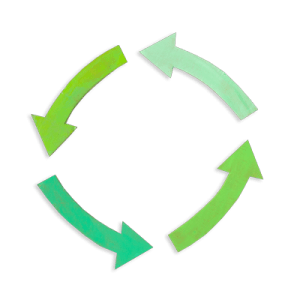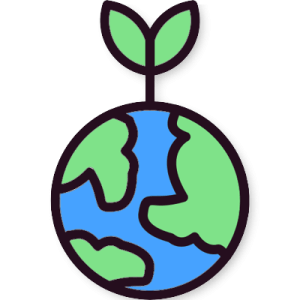Taking action to reduce light pollution
Exploring actions to effectively reduce light pollution in our communities.

Overview
In this activity, students explore sources of light in their communities and think about how light scatters in ways that can cause light pollution. Students collaborate to use criteria to propose three useful actions that can most significantly reduce light pollution in their own communities.
Instructions
What you'll need
- Digital projector and screen
- Student electronic devices with access to internet
- "Exploring actions to reduce light pollution in my community" worksheet
- "How light scatters creating light pollution and skyglow" handout
- Provide each student with a copy of the "Exploring actions to reduce light pollution in my community" worksheet.
- Prompt your students to suggest sources of light energy at night that might contribute to excess light. For example, your students might contribute ideas such as: streetlamps, outdoor house lights, or car headlights.
- Ask students to suggest what actions could be used to reduce light pollution at night. Invite students to note their ideas on their activity sheet.
- Encourage students to share their initial thinking and use their ideas to co-create or present the criteria for an effective action to reduce light pollution. For example, criteria for effective actions may include:
- The action does not negatively affect community safety (e.g., eliminating street lights could contribute to an increase in traffic accidents).
- The action reduces the amount of wasted light energy.
- The action helps reduce the impacts of light pollution on living things.
Display the criteria for an effective action to reduce light pollution for use throughout the rest of this activity.
- Organize your students into small groups and provide each group with a copy of the "How light scatters creating light pollution and skyglow" handout. Ask groups to use ideas from this source to suggest and rate actions that could effectively reduce light pollution in your community. Prompt groups to note their ideas on their activity sheet, reminding them to use the criteria to guide their thinking (note: additional information and sources about actions to reduce pollution can be found in the "Extensions and modifications" section of this activity).
- Guide students’ attention back to their initial thinking from the beginning of this activity and invite them to reconsider their decision: Which three actions would most effectively reduce light pollution most significantly in their community?
- Conclude the activity by inviting your students to suggest how actions that effectively address the causes and effects of light pollution could be connected to important concepts like conservation and sustainability.
Modify or extend this activity
- Consider extending this activity by inviting groups to create a visual, dramatic, or written description of how their proposed action will significantly reduce community light pollution. Encourage each group to think about and include how their plan meets the criteria for a useful action plan.
- Research actions to reduce light pollution from various source. For example, students may discover that changing the design of streetlamp covers can reduce the amount of light pollution.
Here are a few websites that might help your students get started:
- Light: A form of pollution?
- Light pollution solutions
- Lighting for darker skies: Strategies to reduce light pollution
- Best practices for effective lighting
- The best ways to reduce light pollution and improve your quality of life
- Light pollution map
- Eyes in the sky: Exploring global light pollution with satellite maps
- Nightlights (Blue marble navigator)
Curriculum Fit
Science 8
Big idea
- Energy can be transferred as both a particle and a wave
Content
- Light: properties, behaviours, and ways of sensing
Curricular competencies
Questioning and predicting
- Demonstrate a sustained intellectual curiosity about a scientific topic or problem of personal interest
Processing and analyzing data and information
- Experience and interpret the local environment
- Use scientific understandings to identify relationships and draw conclusions
Evaluating
- Consider social, ethical, and environmental implications of the findings from their own and others’ investigations
Applying and innovating
- Contribute to care for self, others, community, and world through personal or collaborative approaches
- Co-operatively design projects
- Generate and introduce new or refined ideas when problem solving
Communicating
- Communicate ideas, findings, and solutions to problems, using scientific language, representations, and digital technologies as appropriate
Assessments
Throughout the activity, consider how well students:
- Contribute to respectful group discussion
- Determine and provide reasoning for useful actions to significantly reduce community light pollution that meet the criteria for useful actions
- Work together as a group to share their thinking and reasoning with the class
Teaching Notes
This activity assumes students have a working knowledge of light pollution.
To learn more about light pollution please visit the following websites:
To learn more about solutions for reducing light pollution, please visit the following websites:
- Light pollution solutions
- Our nights are getting brighter and Earth is paying the price
- The best ways to reduce light pollution and improve your quality of life
BC Hydro's Street light replacement project
BC Hydro owns and maintains over 90,000 street lights attached to our poles located across the province. Over the next two to three years, we'll be replacing these with energy-efficient LEDs. Learn more about BC Hydro's Street light replacement project.








